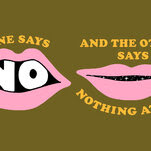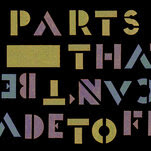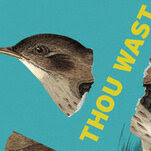如何讀詩 - 博客來
https://www.books.com.tw › products
書名:如何讀詩,語言:簡體中文,ISBN:9787301275276,頁數:255,出版社:北京大學出版社,作者:(英)特里·伊格爾頓,出版日期:2016/11/01,類別:文學小說.
How to Read a Poem 1st 版本
作者 Terry Eagleton (Author)
內容簡介
*.....這將是我們這個時代對詩必不可少的道歉。....." (p.254)
如何讀詩
アポロジー【apology】 の解説
謝ること。陳謝。また、正当性を主張すること。C((形式))(批判などを受けそうなことで)正当性を主張すること,弁護,弁明≪for≫


ISBN 13 碼: 978-1405151412
ISBN 10 碼: 1405151412
大概36年前,我在芝加哥拜訪MOTOROLA公司的最小事業部的最高主管。
他的大辦公室的桌上,擺著百來本關於汽車產業的雜誌與書......
***
我很好奇,網路上沒有"鳥瞰世界的書之海"的網站/網頁。
台灣、中國 (含香港)、日本、美國/英國等,都是出版"重鎮"。
---
紐約時報相關的,有兩大類: 書、書評....以它今天為"詩歌月"的週報為例;
|
Dear Fellow Readers, |
April is National Poetry Month, and this week we revive an old tradition by devoting an entire issue to the form. But first we ask a very basic question: What is poetry, anyway? There’s no simple answer, as our columnist Elisa Gabbert explains in an essay that probes and celebrates that very ambiguity. “The poem is a vessel,” she writes; “poetry is liquid.” |
Personally, the metaphor I’ve been using for this issue is the Westminster Dog Show, where we might strain to see any similarity between a whippet and a Pekingese and a wire fox terrier (the best breed), but we recognize them all as dogs. So in the poetry issue, you’ll find our review of “Rhyme’s Rooms,” in which the avowed traditionalist Brad Leithauser explains meter and rhyme and the other elements that have long defined poetry, but you’ll also find Dana Levin’s voluble new collection, “Now Do You Know Where You Are,” with its gleeful mix of prose and verse, and Linda Gregerson’s “Canopy,” with its elegant, austere lyricism about the end of the world, and Gabriel Ojeda-Sagué’s hall-of-mirrors hybrid “Madness,” which offers the selected poems of a writer who never existed. These books might not bear much resemblance to one another, but they all have a place in the show. |
More poetry: Roger Reeves’s “Best Barbarian” tips its hat to the Western canon even as it challenges its omissions and expands its political and artistic possibilities. Ange Mlinko’s “Venice” deploys polished traditional forms to express a wild, whirlwind energy. There’s also a posthumous collection from the celebrated outback poet Les Murray, a new translation of “Flight and Metamorphosis,” by the Nobel laureate Nelly Sachs, and a resonant sonnet about love and war by the Ukrainian poet Yuri Burjak. |
In nonfiction, besides Leithauser’s tour of poetic techniques we have Robert Pinsky reviewing a new biography of John Keats and Heather Clark reviewing the diaries of Edna St. Vincent Millay. (“I do not think there is a woman in whom the roots of passion shoot deeper than in me,” Millay wrote.) Finally, a couple of treats: Ocean Vuong’s By the Book interview, in which the poet and novelist admits he has read books at M.M.A. fights, and a trip to our archives with Tina Jordan, who uncovers the remarkable fact that the sinking of the Titanic inspired so much bad poetry among Times readers that editors here had to plead with them to stop submitting it. |
You’ll find the complete contents of this week’s issue below. Please let us know what you think — not just about these reviews, but about our other coverage, too. You can email us at books@nytimes.com. We read every letter sent. |
Gregory Cowles |
THE BOOK REVIEW PODCAST | ||
| ||















沒有留言:
張貼留言